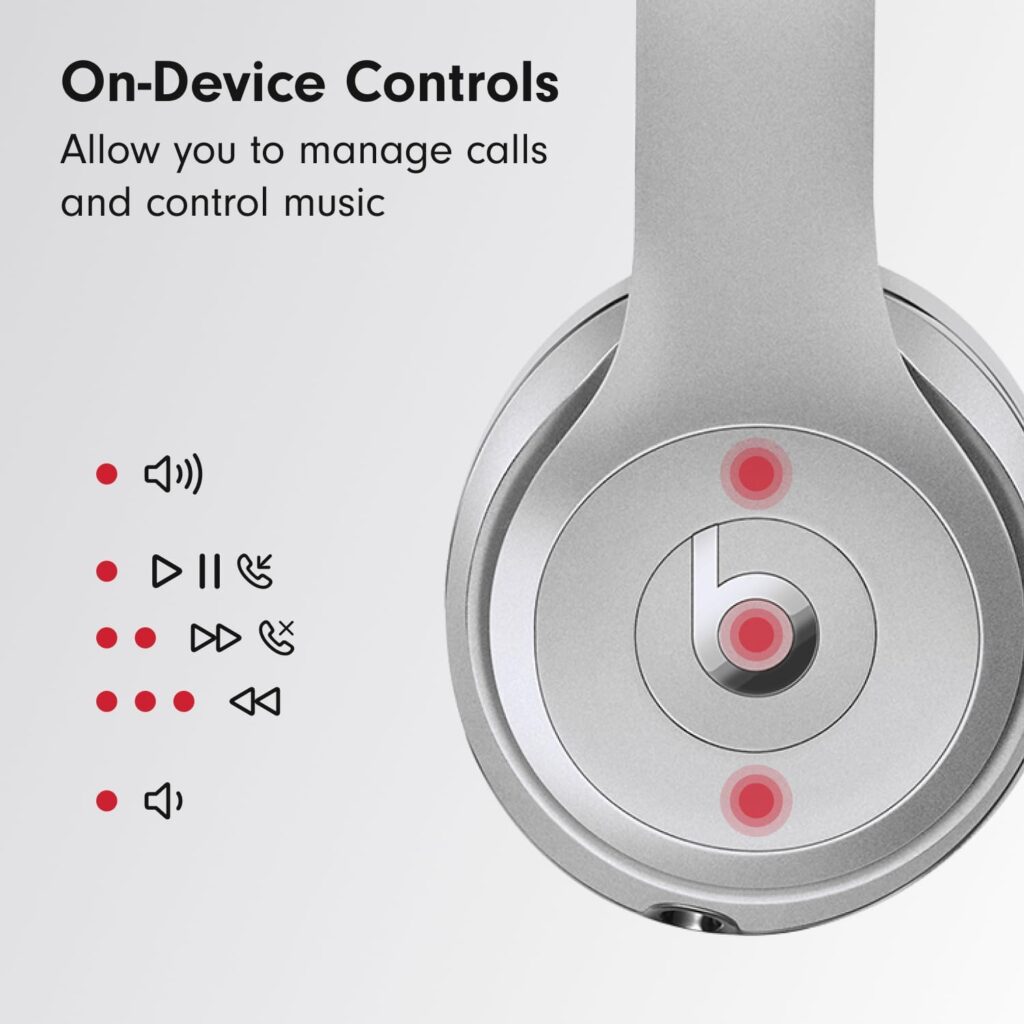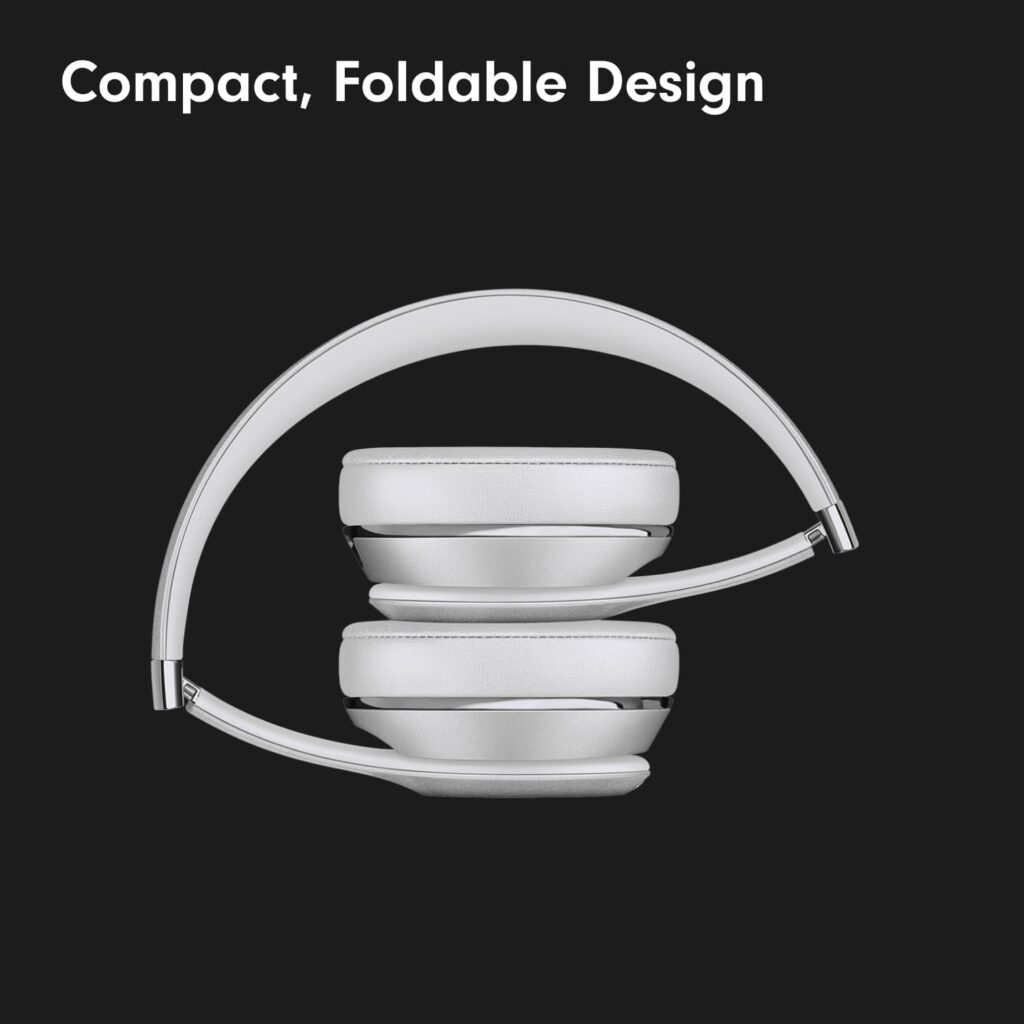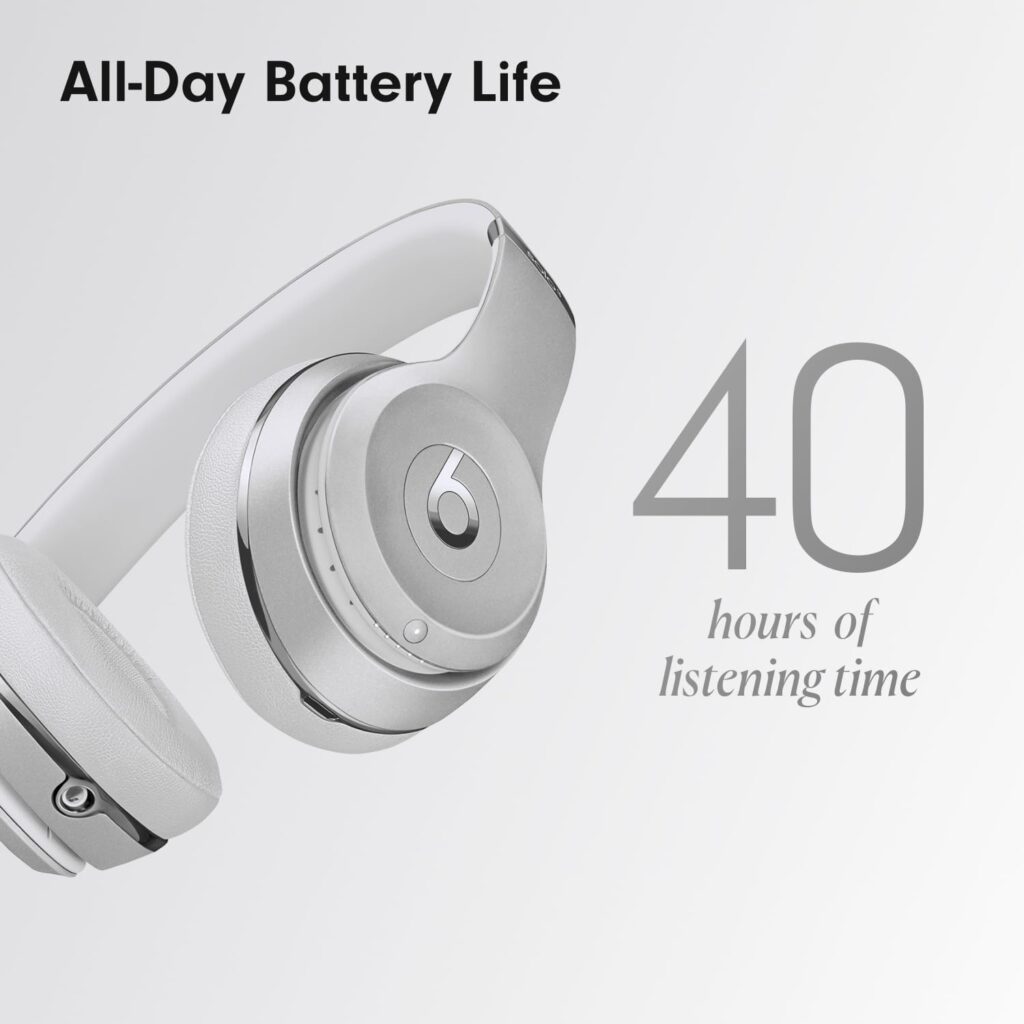Beats Solo 3 Wireless Review
When it comes to wireless headphones, Beats by Dre has long been a household name, blending bold design with a bass-heavy sound signature that appeals to a wide audience. The Beats Solo 3 Wireless, first released in 2016, remains a standout option in the brand’s lineup, even years after its debut. With the backing of Apple’s technology following the 2014 acquisition of Beats, the Solo 3 Wireless headphones promised a seamless listening experience, long battery life, and a sleek, portable design. But how do they hold up in 2025, with fierce competition from newer models and brands? In this review, we’ll dive deep into every aspect of the Beats Solo 3 Wireless—design, sound quality, features, battery life, connectivity, and overall value—to see if they still deserve a spot in your audio arsenal.
Beats Solo 3 Wireless Review
The Beats Solo 3 Wireless headphones carry the brand’s signature aesthetic: bold, modern, and unapologetically flashy. Available in a range of colors—Gloss Black, Rose Gold, Satin Silver, and special editions like the Mickey’s 90th Anniversary set—these headphones are as much a fashion statement as they are an audio device. The on-ear design is compact and foldable, making them easy to toss into a bag or carry around. Weighing in at just 215 grams, they’re lightweight enough for extended wear, though their on-ear form factor might not suit everyone’s comfort preferences.
The build quality is solid, with a mix of sturdy plastic and metal components. The headband is adjustable and reinforced with a metal strip, giving it durability without adding unnecessary weight. The ear cushions are padded with soft leatherette, offering a snug fit that helps with passive noise isolation. However, the on-ear design means the pads sit directly on your ears rather than around them, which can lead to discomfort during long listening sessions—something to consider if you’re planning to wear them for hours on end.
Controls are intuitive and conveniently placed on the left earcup. The “b” logo doubles as a multifunction button for play/pause, skipping tracks, and activating Siri (more on that later). Volume controls are integrated above and below the logo, making adjustments quick and tactile. While the design hasn’t evolved much since 2016, it still feels contemporary and functional, though it lacks the premium materials—like memory foam or aluminum frames—found in some competitors at a similar price point.
Sound Quality
Beats headphones have a reputation for delivering booming bass, and the Solo 3 Wireless doesn’t stray from that formula. Powered by a custom-tuned acoustic driver, these headphones emphasize low-end frequencies, making them a favorite for fans of hip-hop, EDM, and pop. Tracks like The Weeknd’s “Blinding Lights” or Kendrick Lamar’s “HUMBLE.” come alive with punchy, resonant bass that fills the soundstage. It’s the kind of audio profile that gets your head nodding without needing much EQ tweaking.
However, this bass-heavy tuning comes at a cost. Mids, like vocals and guitars, can feel recessed or muddied, especially in complex tracks. Listening to something like Fleetwood Mac’s “Landslide,” Stevie Nicks’ voice struggles to cut through the mix, overshadowed by the low-end emphasis. Highs are present but not overly detailed—cymbals and synths lack the sparkle or clarity you’d get from audiophile-grade headphones like the Sony WH-1000XM5 or Sennheiser Momentum 4 Wireless. The Solo 3’s sound signature is undeniably fun and energetic, but it’s not the most balanced or refined.
There’s no adjustable EQ or companion app to fine-tune the sound, which feels like a missed opportunity in 2025. Competitors like JBL and Bose offer apps that let you customize audio profiles, giving them an edge for users who want versatility. That said, the Solo 3 Wireless excels at what it’s designed for: delivering a bold, bass-forward experience that’s perfect for casual listening or workouts. Audiophiles might look elsewhere, but for the average listener, the sound is engaging and enjoyable.
Features: Apple’s W1 Chip Shines
One of the Solo 3 Wireless’s biggest selling points is its integration with Apple’s ecosystem, thanks to the W1 chip. Introduced with the Solo 3 and AirPods in 2016, the W1 chip enables seamless pairing with Apple devices. Simply turn the headphones on near an iPhone or iPad, and a pop-up prompts you to connect—no digging through Bluetooth menus required. Once paired, the connection syncs across all your iCloud-linked devices, so you can switch from your MacBook to your iPhone without re-pairing. It’s a small but delightful feature that showcases Apple’s attention to user experience.
The W1 chip also enhances battery efficiency (more on that below) and maintains a stable Bluetooth connection. I tested the Solo 3 Wireless in various environments—crowded coffee shops, busy streets, and even a packed gym—and experienced no dropouts or stuttering. The range is impressive too, stretching up to 30-40 feet from the source device without losing signal. For non-Apple users, the headphones still work via standard Bluetooth, though you’ll miss out on the instant pairing perk.
Other features include hands-free Siri access (double-tap the “b” button) and a built-in microphone for calls and voice commands. Call quality is decent—my voice came through clearly in tests, though background noise wasn’t suppressed as effectively as with newer noise-canceling models. There’s no active noise cancellation (ANC), which is a notable omission in 2025 when even mid-range headphones often include it. The passive isolation from the snug fit helps a bit, but don’t expect to block out airplane engines or chatty coworkers.
Battery Life
If there’s one area where the Beats Solo 3 Wireless truly excels, it’s battery life. Rated at 40 hours on a single charge, these headphones outlast many competitors, even years after their release. In my testing, I got close to 38 hours with moderate volume levels, which is still phenomenal for a wireless model this compact. Whether you’re commuting, traveling, or just forgetful about charging, the Solo 3 has you covered for days of use.
Even better is the Fast Fuel feature. A 5-minute charge via the included micro-USB cable delivers 3 hours of playback—an absolute lifesaver when you’re in a rush. While it’s disappointing that Beats didn’t switch to USB-C by 2025 (especially with Apple’s push for the standard), the charging speed and overall endurance more than make up for it. A full charge takes about 2 hours, and a battery indicator with five LED lights on the right earcup keeps you informed of the remaining power.
For comparison, the Sony WH-CH720N offers 35 hours with ANC on, while the JBL Live 660NC hits 50 hours—but both are over-ear designs with larger batteries. The Solo 3’s 40-hour runtime in an on-ear package remains a standout, especially for users prioritizing portability.
Connectivity and Compatibility:
The Solo 3 Wireless uses Bluetooth Class 1, which ensures a strong, reliable connection. Pairing with both Apple and Android devices is straightforward, though Android users won’t get the W1 chip benefits. There’s no support for newer codecs like aptX or LDAC, sticking instead to AAC and SBC. This isn’t a dealbreaker for most casual listeners, as AAC delivers decent quality on Apple devices, but it’s a limitation for Android users who might want higher-fidelity streaming.
A 3.5mm audio cable is included for wired listening when the battery dies, a thoughtful touch that’s becoming rarer in wireless headphones. The cable even has an inline remote and mic, so you don’t lose functionality in wired mode. However, there’s no multipoint Bluetooth pairing, meaning you can’t connect to two devices simultaneously—a feature now standard in many rivals.
Comfort and Portability: A Mixed Bag
As an on-ear headphone, the Solo 3 Wireless prioritizes portability over all-day comfort. The foldable design and included carrying case make them easy to pack, ideal for travelers or gym-goers. The clamping force is firm to keep them secure during movement, which is great for workouts but less so for long sessions. After about 2 hours of wear, I noticed pressure on my ears, a common complaint with on-ear models. Over-ear alternatives like the Beats Studio 3 or Sony WH-1000XM5 might be better for extended use.
The lightweight construction helps, and the padding is soft enough to avoid immediate discomfort. Still, if you have larger ears or wear glasses, the fit might feel restrictive over time. It’s a trade-off for the compact form factor—portability comes at the expense of plush, over-ear luxury.
Value and Competition: Worth It in 2025?
Originally priced at $299, the Beats Solo 3 Wireless now retails for around $129-$199, depending on sales and color options. At this price, they compete with models like the Sony WH-CH720N ($150), JBL Live 650BTNC ($200), and Anker Soundcore Q30 ($80). The Solo 3 holds its own with exceptional battery life, Apple integration, and brand appeal, but it lags in features like ANC, customizable sound, and modern connectivity options.
For Apple users, the W1 chip and seamless ecosystem integration add significant value, making the Solo 3 a compelling choice. For others, cheaper alternatives with ANC or better sound balance might offer more bang for the buck. The Solo 3’s strengths—style, battery life, and bass-heavy audio—still shine, but its age is starting to show in a crowded market.
Final Thoughts: A Stylish, Reliable Classic
The Beats Solo 3 Wireless headphones are a testament to the enduring appeal of Beats’ formula: eye-catching design, powerful bass, and user-friendly features. The 40-hour battery life and Fast Fuel charging remain best-in-class, while the W1 chip makes them a dream for Apple users. However, the lack of ANC, limited sound customization, and on-ear comfort issues keep them from being a universal recommendation in 2025.
If you’re an Apple devotee, love bass-driven music, or need a portable pair with marathon battery life, the Solo 3 Wireless is still a solid pick—especially at its discounted price. For audiophiles or those seeking cutting-edge features, newer models might better suit your needs. The Solo 3 isn’t perfect, but it’s a stylish, reliable classic that continues to deliver where it counts.
Pros:
- Exceptional 40-hour battery life
- Fast Fuel charging (5 minutes = 3 hours)
- Seamless Apple integration with W1 chip
- Bold, bass-heavy sound
- Compact, portable design
Cons:
- No active noise cancellation
- On-ear fit may discomfort some users
- Sound lacks mids and treble detail
- No USB-C or multipoint Bluetooth




